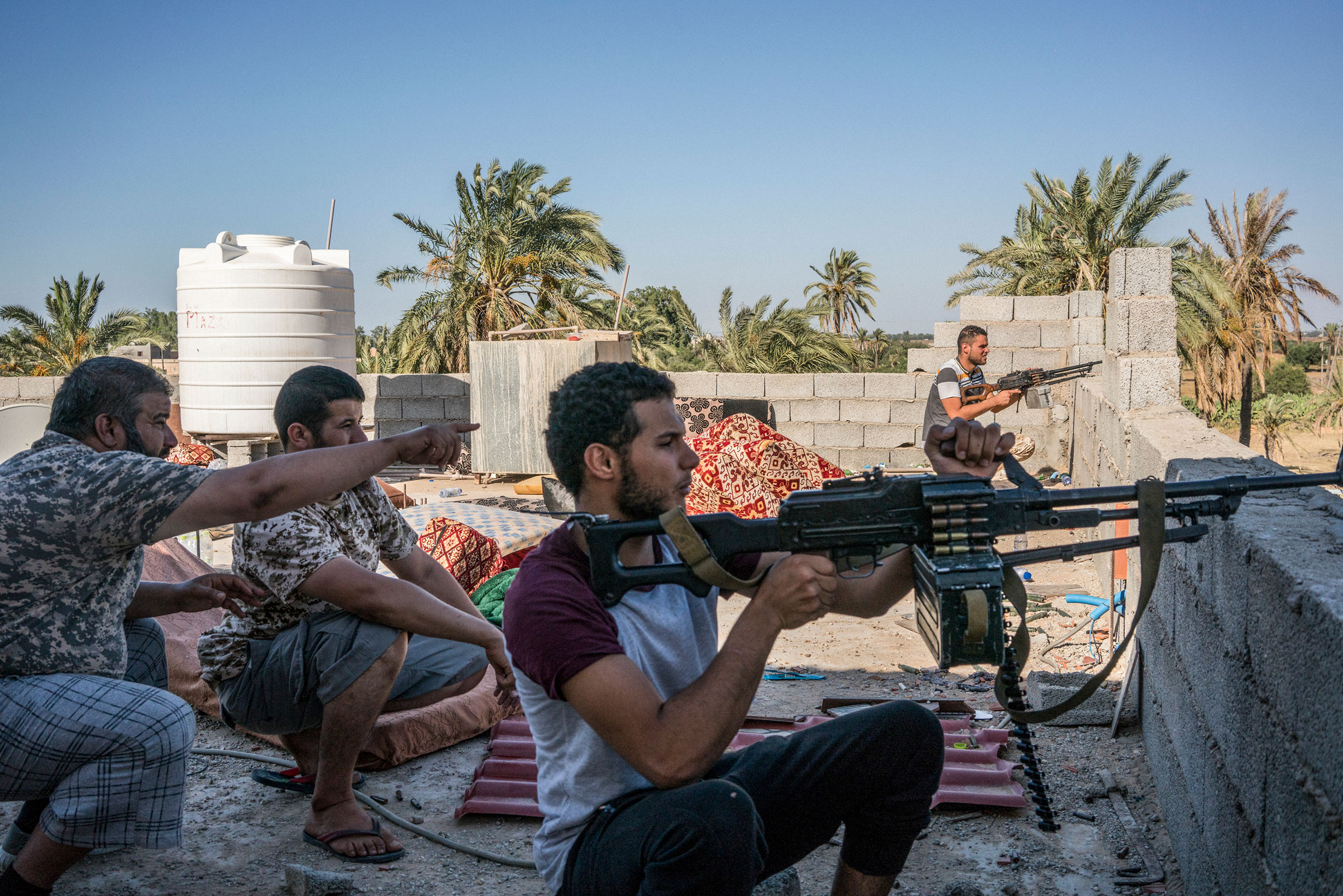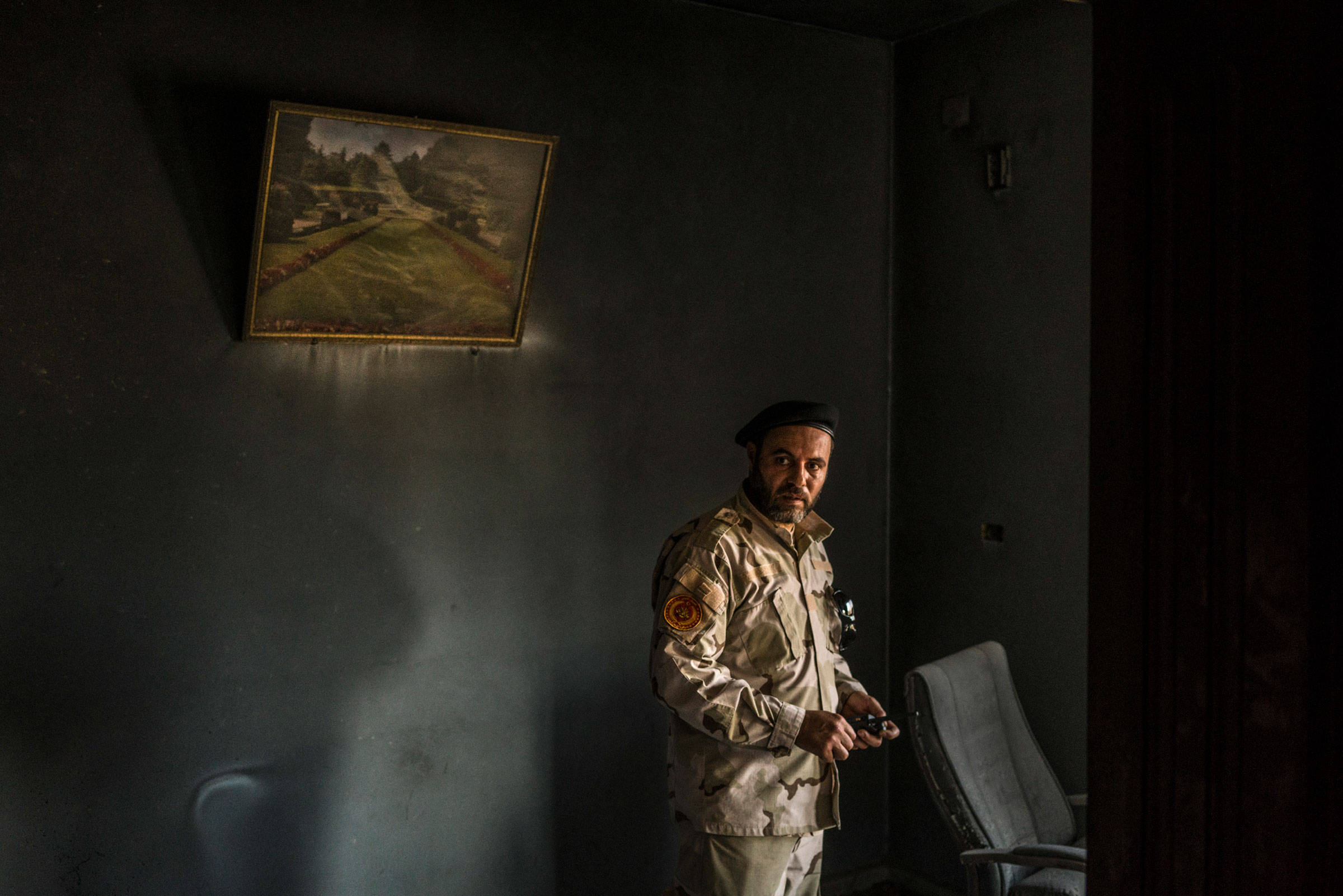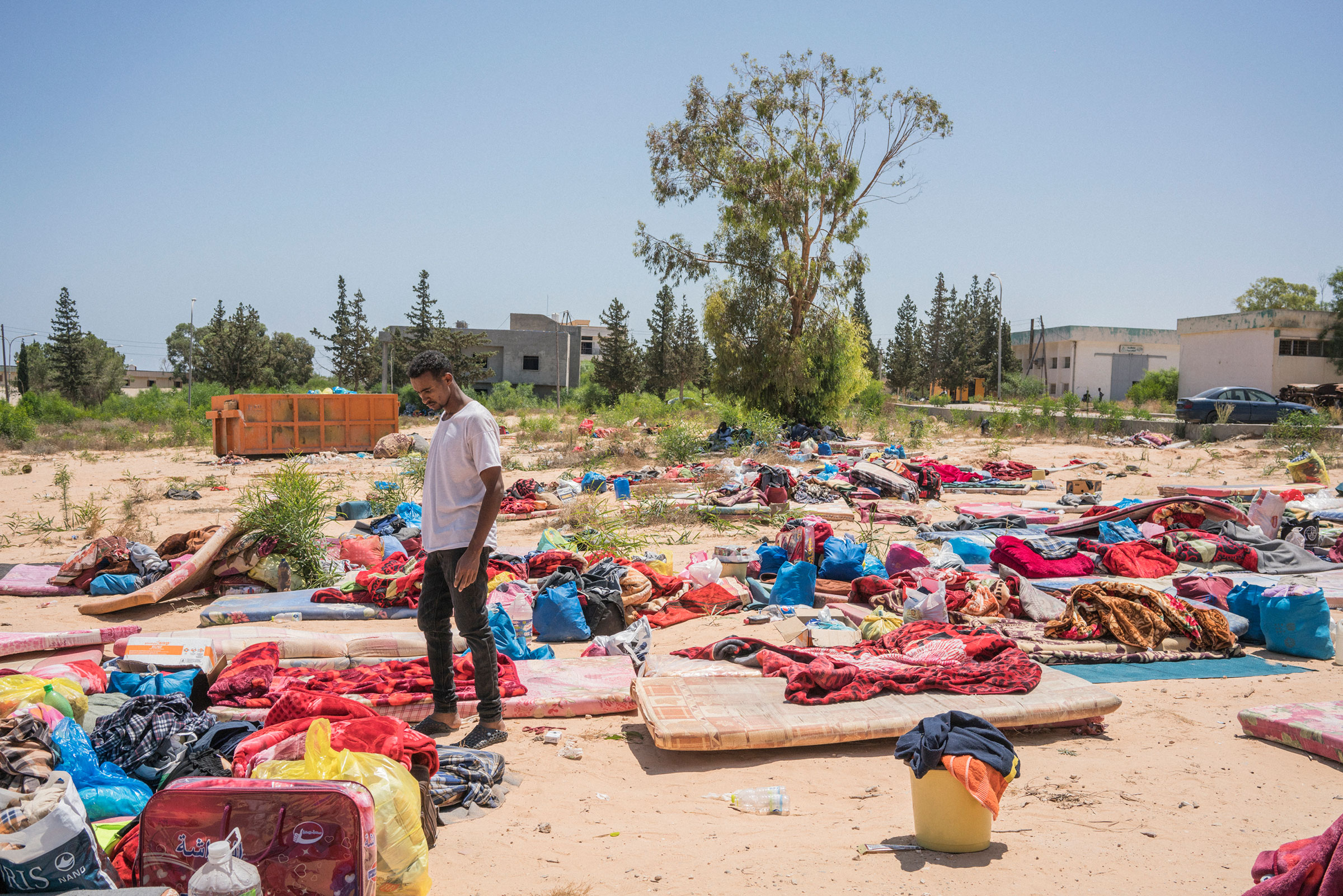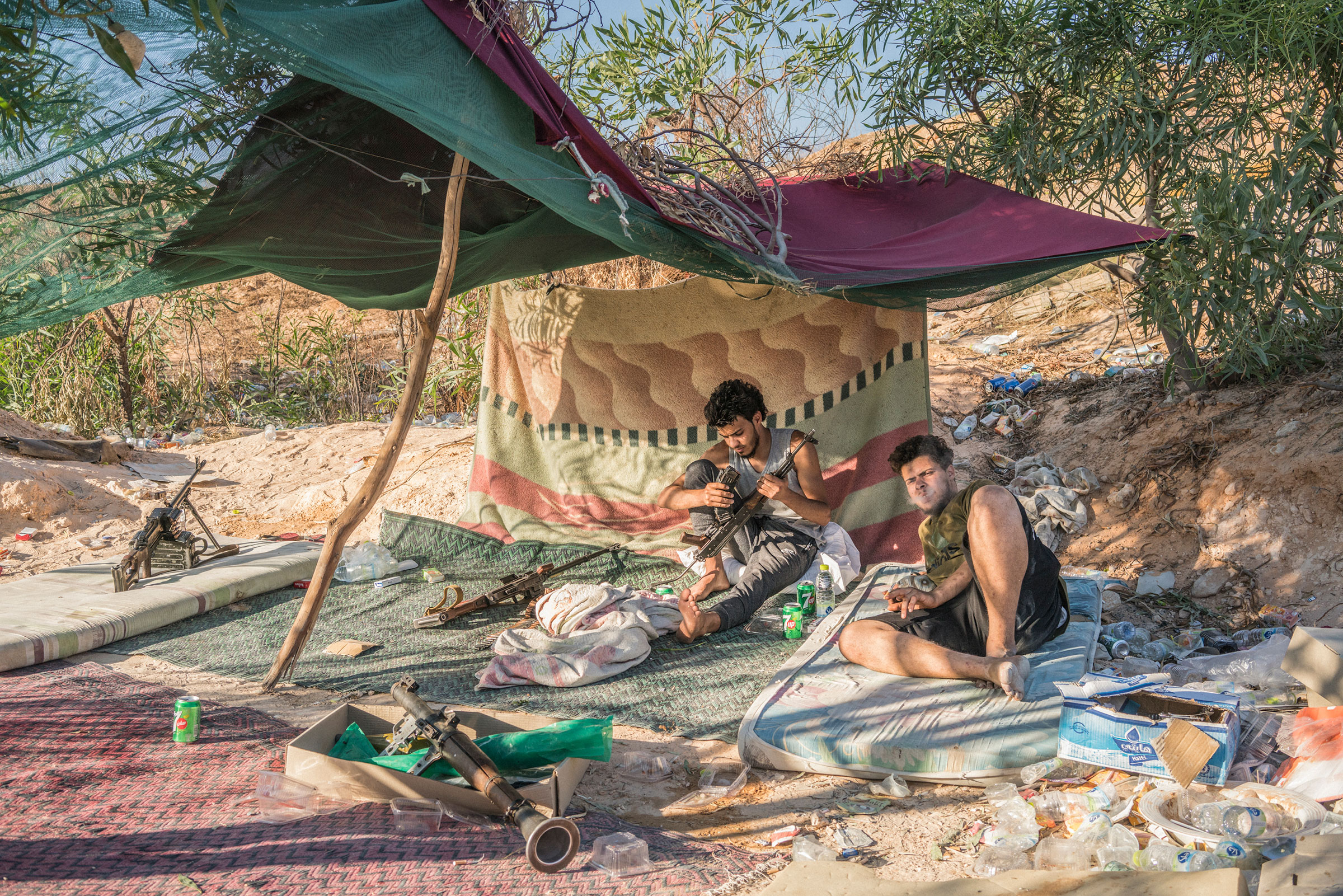
The last time Libya’s war had the world’s full attention, it was being fought mainly by Libyans.
For much of 2011, young revolutionaries in mismatched fatigues clamored on anti-aircraft guns, and the narrative driving events was the Arab Spring, an uprising that promised to place the power in the hands of citizens long subjugated by despots.
Though Libyans shaped the ebb and flow of battle, they were hardly alone, even then: circling high above were foreign warplanes from the NATO-led coalition that kept at bay fighters loyal to Muammar Gaddafi. And contrary to some official denials, there were also “boots on the ground” in the form of foreign special operations forces and intelligence personnel, from France, Britain, the U.S., the United Arab Emirates and Qatar, who discretely channeled weapons and training to fractious anti-Gaddafi groups. In such meddling, there were already signs of a proxy rivalry that would explode into open warfare years later.

Still, Libyans had a sense of owning their destiny, for better or for worse. After French fighter jets and a U.S. drone struck the dictator’s convoy in October 2011, it was a mob of his countrymen that dragged him from a drainage pipe and killed him. And in the months that followed, the Obama administration and its allies wanted to let the Libyans determine their own path after Gaddafi, avoiding the imperious occupations of Iraq and Afghanistan—a “light-footprint” approach that has since been criticized for enabling the strife that followed.
That conflict, which will enter its tenth year on Feb. 17, has recently morphed into an internationalized war where foreign governments openly provide the weapons, money and lately even the fighters. It is no longer framed, at least by some in the media, by high-minded goals like freedom, but by cynical outside “interests,” which have little to do with ordinary Libyans.
The U.S., now largely on the sidelines in Libya, nominally supports one side – the Government of National Accord (GNA), a rickety administration that holds the capital and is beholden to corrupt militias. But President Donald Trump has also talked admiringly about the GNA’s main enemy, a septuagenarian warlord who is on record saying Libya is “not ripe for democracy.”
This renegade would-be strongman, Khalifa Haftar, is backed by a raft of Arab monarchies and authoritarian states—the Emirates, Egypt, Saudi Arabia and Jordan—plus France and, significantly, Russia, which last fall dispatched hundreds of contract fighters from the Kremlin-backed Wagner Group to boost Haftar’s assault on Tripoli. I was on the front when these fighters arrived, and I saw firsthand how their precision artillery strikes and lethal snipers eroded the morale of GNA fighters. For the first time since his offensive started, Haftar was slowly gaining territory. Faced with a potential collapse, the Tripoli government turned to Turkey, the one country backing it with more than rhetoric. Starting in late December, Turkey flew in more than 2,000 militiamen from Syria, hardened veterans of another regional civil war, along with air defense systems and artillery.

The range of foreign powers involved in the battle for Libya might make it seem from afar like an abstract game of geopolitical chess. Up close, it’s a deeply visceral war. One afternoon last summer at the front, I followed a group of government militiamen down the staircase of a shell-pocked villa, tracing a trail of dried blood—the handiwork of a sniper. We passed through a shattered bedroom where an anti-tank round had punched through the walls. Everything was coated with dust; clothes spilled from an open closet. A woman had died here, the fighters said, along with her child. The intimacy of the violated scene was unsettling: on a dresser, someone had left a bottle of perfume and an open Qur’an.
It’s hard to overstate the impact of nine years of violence on the social fabric and psyche of a nation. In the past year alone, about 2,000 people have died, including hundreds of civilians, and hundreds of thousands have been displaced from their homes, according to the UN. “Our hearts are dead,” says a Libyan humanitarian worker whose daily work involves prying corpses from rubble and fishing drowned migrants from the sea. In Libya, the physical war is matched in intensity by battles on satellite TV and social media, where Libyan trolls and provocateurs are stirring up tensions between the country’s east, where Haftar’s rise began, and west, which includes Tripoli. Some wonder whether the country of 6 million will ever be whole again.
The fighters I meet show me their scars—gouges from shrapnel, a bullet hole, a missing limb—from battles they list on their fingers. Over the years, a militia can become a fraternity and a culture.

The fighters’ sacrifices have also bestowed a worrying sense of entitlement, one that often upstages Libya’s elites at lofty international summits like the one Germany hosted on Jan 19. In Berlin, every major foreign meddler in Libya’s war publicly pledged to build on a provisional truce. They also promised to finally abide by a U.N. arms embargo that has been widely ignored for almost a decade.
But after the meeting, the intervening states intensified their shipments of weapons to their Libyan proxies; the Emirates in particular stepped up their support to Haftar, in what appears to be a preparation for a renewed assault. Buoyed by this influx of arms, Haftar’s forces in recent weeks have shelled Tripoli’s airport and blockaded oil terminals, causing national output to drop by 75 percent, which only adds to the suffering of everyday Libyans who depend on this revenue.
Although U.N.-backed mediation attempts continue, the provocations are yet another blow to any hope that this deeply wounded society might heal. In an empty school one morning in the anti-Haftar western city of Misrata, I met a group of women, members of a charity, who cook meals for the frontline fighters and provide them with donated clothes. Rolling date paste in semolina dough—a delicacy called magrood—a middle-age psychologist in a polka-dot robe scoffed at the idea of a truce.

The campaign on Tripoli that began last April was in a sense the latest round of a civil war that began before Gaddafi’s death. But it’s also the project of one man and his remarkable, almost film-worthy rise to the global stage.
Born in 1943, Haftar allied himself with a young captain named Muammar Gaddafi to topple the Libyan monarchy in 1969. He served Gaddafi’s regime until its ill-fated invasion of Chad in the 1980s, when, after a humiliating battlefield defeat, Haftar defected with some of his men to the opposition. His army of exiles received training from the CIA before being evacuated from Africa. Haftar settled in northern Virginia, where he lived for roughly 20 years before returning to Libya in 2011, proclaiming himself the man who could lead the rebels’ military campaign—only to be shunted aside.
His moment finally came in 2014, when he launched a war against jihadists, Islamists and political opponents in the violence-wracked city of Benghazi. The battle was long and bloody, with human rights abuses on both sides. One of Haftar’s officers was issued with a warrant for war crimes by the International Criminal Court; he remains under the general’s protection. It also marked the start of Haftar’s military backing from the Emirates, Egypt, and France — support that stems, in varying degrees, from ideological affinity with his anti-Islamist and anti-democratic leanings, and his counterterrorism aims. After victory came in 2017, he turned his gaze on Tripoli.
Haftar is a tall, mustachioed man who favors epauletted uniforms resplendent with medals, though for international meetings he dons a dark tailored suit. When I interviewed him in the summer of 2014, he exalted the moral supremacy of the military while disparaging civilian-led politics. Like all absolutists, he is a great simplifier, reducing Libya’s economic and political problems to abstractions like “terrorism” and “security.” Like other nativists, he defines the nation in solipsistic terms, in opposition to its “enemies,” real and imagined.

When he launched his attack last year on Tripoli, he claimed to be cleansing the GNA of corrupt militias and radical Islamists. The pretext collapses under scrutiny. There’s no doubt the GNA was in the grips of predatory armed groups, but Haftar’s forces are themselves comprised of irregular militias who are also deeply corrupt.
As for his charge of a terrorist infestation in the capital, U.S. defense officials recently told me that is a vast exaggeration. At any rate, many Western diplomats say the GNA have been helpful counterterrorism partners. Some of the commanders fighting Haftar today received U.S. support during the months-long battle against ISIS in the Libyan city of Sirte in 2016.
Still, Haftar has attracted support from diverse swathes of Libyans who have grafted their grievances onto his campaign, despite deep reservations about his ambitions. Some just wanted him to restore order, whatever the cost. Some have since questioned his war and his autocratic vision. But breaking openly with the general is fraught with peril; many who have done so have disappeared.

Haftar’s latest offensive has seen possibly one of the largest ever wartime deployments of armed drones, piloted on one side by personnel from the Emirates, and on the other by Turks. Emirati-supplied drones alone have conducted 850 strikes for Haftar’s side, often killing civilians. In late November I stumbled across a bombed-out biscuit factory where 10 workers, including several migrants, were killed. Scattered across the factory grounds were impact craters strewn with human remains.
The victims of the strike hold one answer to the question: Why should anyone in the West care about Libya? Among the injured workers were those from Niger and Bangladesh, migrants trying to earn enough money to buy a place on a smuggler’s boat to Italy, 290 miles across the Mediterranean. The movement of labor from the globe’s poorer south to its richer north may be a natural part of globalization, but anti-immigrant sentiments are remaking Western politics.
Gaddafi suppressed the flow of migrants in exchange for Italy paying reparations. But in the lawlessness since 2011, Libya has become the back door to Europe that Turkey was for Syrian refugees. Italy has once again tried to quarantine the flow of people in Libya, backing a deal under which Tripoli has paid off militias to do so, directly bolstering their power. The migrant crisis—along with the broader civil war—has been further abetted by a divided European Union, an ambivalent America, and active backing for Haftar by France, Russia, and regional Arab states.
The Tripoli war has been a strange, seemingly post-modern type of combat, waged until recently by all-seeing drones in the sky and hired guns on the ground. “A war with very few warriors,” the U.N. special representative for Libya, Ghassan Salame, called it in a speech, accurately enough. But it’s also a brutally human battle, fought by young Libyans who hurl insults at one another across the frontlines, desecrate corpses and mistreat prisoners, just as soldiers have always done. Here, when death comes, it comes quickly and sometimes from the air, for fighters and civilians alike.
The city feels on edge. Afternoon rains lash the fraying facades of the Italianate quarter; traffic builds up and power goes out for 16 or 20 hours at a time. Half-finished high-rises loom on the horizon. There are shortages of fuel and cash: residents queue for hours outside banks for a daily allotment of dinars, herded by militiamen in lizard-stripe fatigues. Archipelagos of garbage line the roads.

In a garage that serves as a studio, a 24-year-old street artist and muralist named Mohammed Shandoul flips through cell phone photos of his artwork. He got his start as an artist like so many others in the aftermath of Libya’s 2011 revolution, when the streets of Tripoli saw an explosion of vivid graffiti. He was just 15 then, painting first on the ruins of Gaddafi’s bomb-shattered palace. And while he’s since refined his style, won a prize, and even makes some money on his art, those heady, electric days seem a distant memory.
Shandoul wants to move his family to Tunis, where his art graces nightclub walls, but he’s leery: the costs are too high and societal differences between Libya and Tunisia make adjusting hard for the older generation. His family is crowded into a small apartment, but others have it far worse. They live in makeshift shelters like classrooms or factory dorms, enduring daily humiliations like contaminated water and disrupted schooling, amid a war with no end in sight.
The artist paints mostly at night now, artillery booming in the distance. The resumption of fighting means that some of the militias that used to prowl the streets and harass him are otherwise occupied, deployed once again to the front.
“Chaos is better for me,” he tells me dryly.
Frederic Wehrey is a senior fellow at the Carnegie Endowment for International Peace and the author of The Burning Shores: Inside the Battle for the New Libya.
The author is grateful for the reporting assistance of Muath Mustapha
More Must-Reads from TIME
- Cybersecurity Experts Are Sounding the Alarm on DOGE
- Meet the 2025 Women of the Year
- The Harsh Truth About Disability Inclusion
- Why Do More Young Adults Have Cancer?
- Colman Domingo Leads With Radical Love
- How to Get Better at Doing Things Alone
- Michelle Zauner Stares Down the Darkness
Contact us at letters@time.com